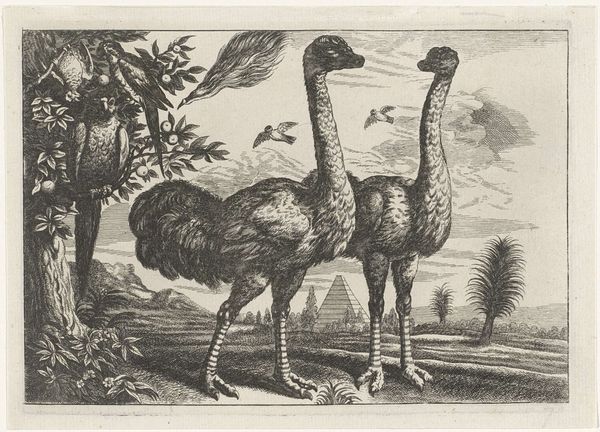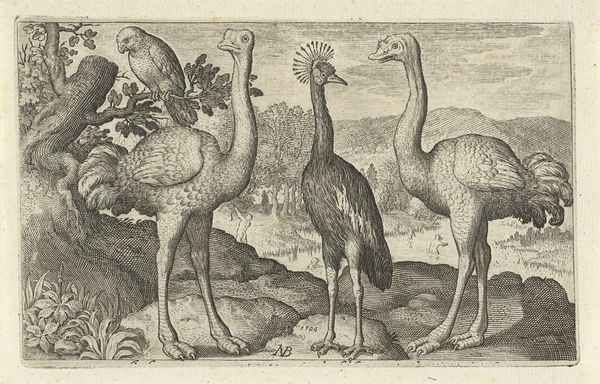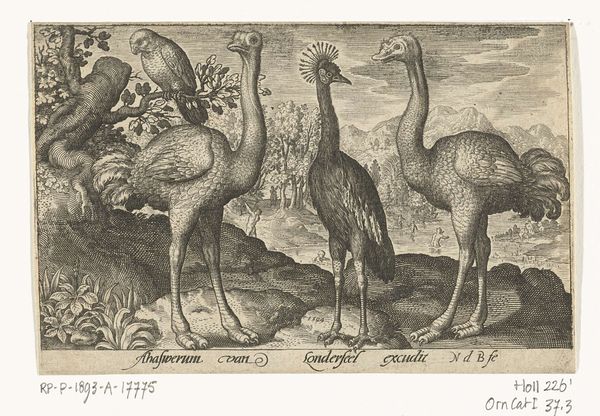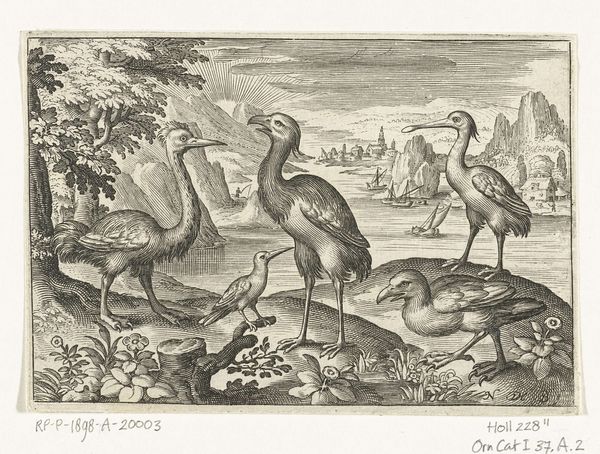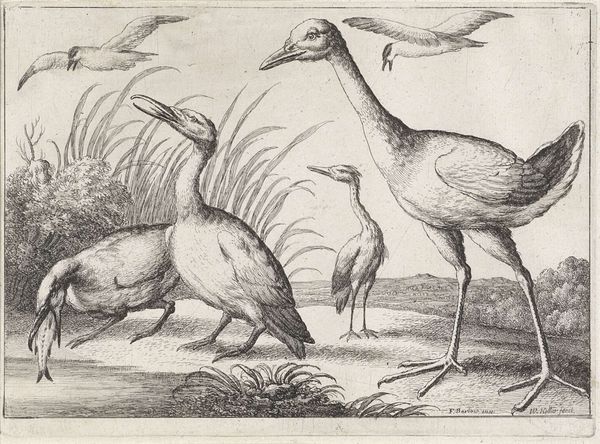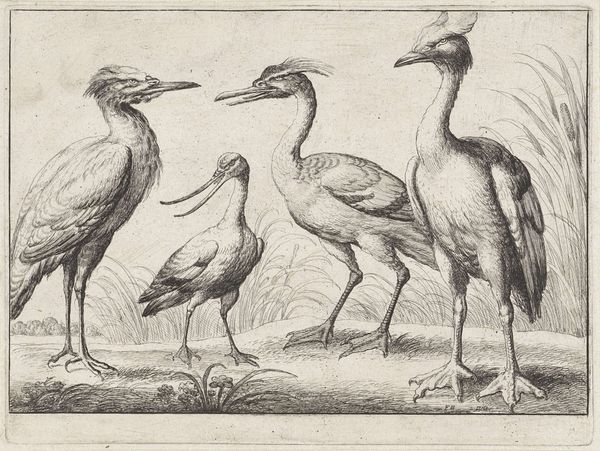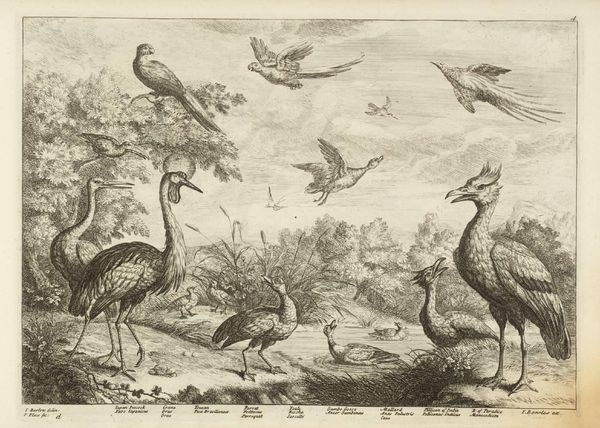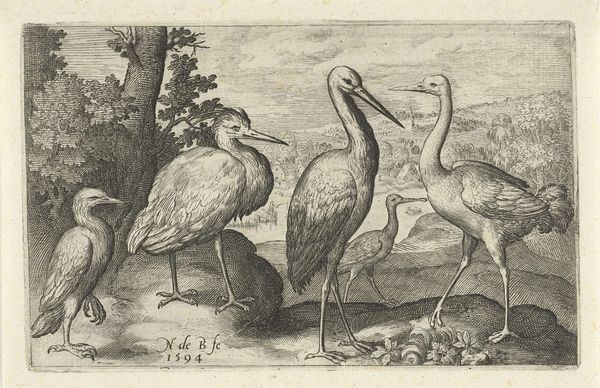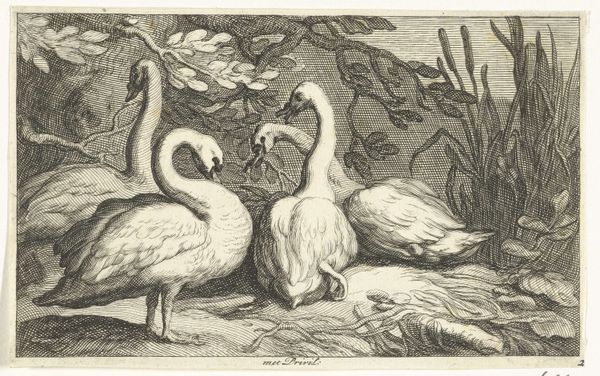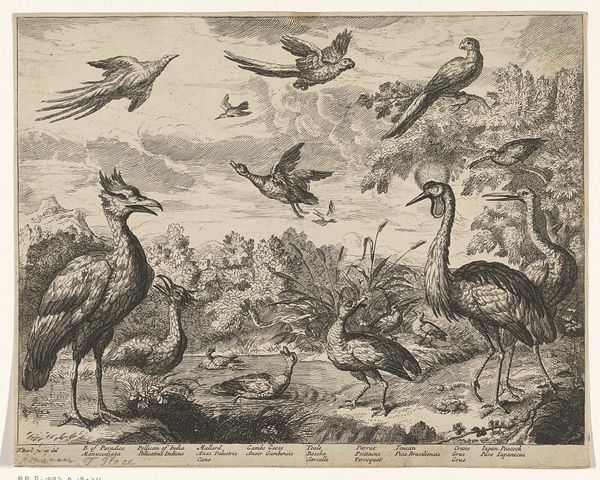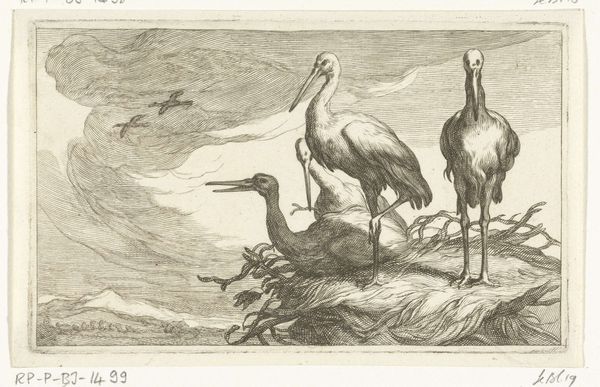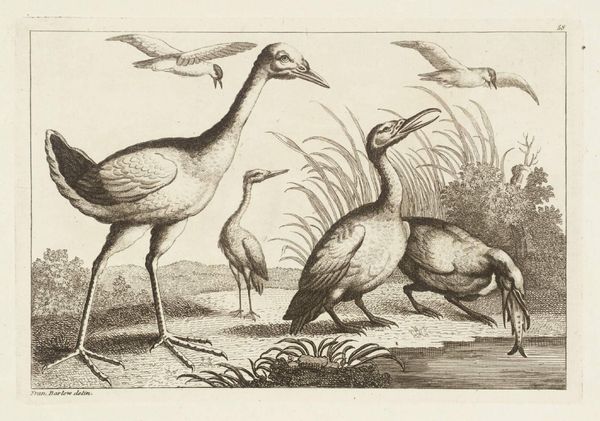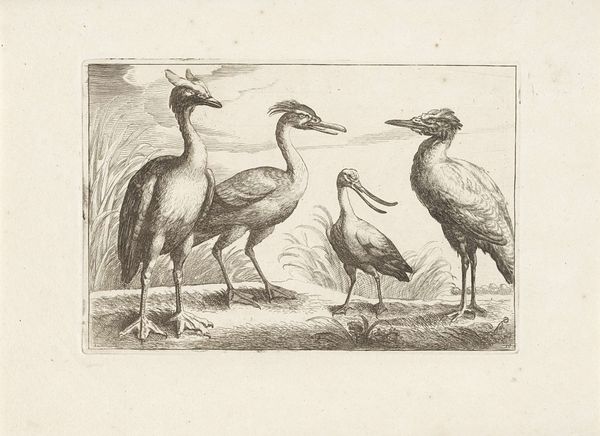
print, engraving
#
baroque
#
animal
# print
#
landscape
#
bird
#
figuration
#
genre-painting
#
engraving
Dimensions: height 219 mm, width 301 mm
Copyright: Rijks Museum: Open Domain
Curator: Let's talk about this print, "Verschillende vogels en een aap," or "Different birds and a monkey," believed to be created sometime between 1655 and 1718 by Jan Griffier the elder. It's an engraving showing an array of exotic birds populating a European-style garden, complete with a cheeky monkey observing from the sidelines. Editor: My initial reaction is one of slight unease. Despite the idyllic garden setting, the composition feels somewhat sterile. There’s a strange artificiality about it, as if these creatures have been forced into an environment not truly their own. Curator: That's a keen observation. Consider the context of the Baroque period. There was growing interest in the natural world, fueled by colonial expansion and exploration. Prints like this served as visual encyclopedias, displaying the exotic specimens collected from around the globe to European audiences. They reinforced ideas of power and dominance over the natural world. Editor: Precisely. The presence of the monkey, perched above the scene, almost feels like a commentary on this very dynamic. Is it observing the birds or us, the viewers? It’s a subtle nod to the inherent power imbalances present in the act of categorizing and displaying these creatures. This could easily be about human greed and a sense of entitlement, packaged prettily for consumption. Curator: I see your point. Furthermore, note how the artist presents these animals in a relatively flat perspective. The emphasis is less on their natural behavior and more on showcasing their physical attributes. The arrangement feels deliberate, almost staged, reflecting the scientific gaze and the desire to catalog and control nature. Editor: Absolutely. It feels reminiscent of those early zoos, places where animals were viewed more as curiosities rather than as living, breathing beings deserving of respect. And it highlights the problematic history of how we’ve often objectified and commodified the natural world. It’s a powerful image, unintentionally illustrating themes of control and othering. Curator: This discussion has certainly highlighted the multiple layers embedded in this seemingly straightforward depiction of birds and a monkey. Editor: Yes, beyond the initial aesthetic appeal, this work makes you think about the ethical dimensions of representation and the power structures implicit in our relationship with the environment.
Comments
No comments
Be the first to comment and join the conversation on the ultimate creative platform.
